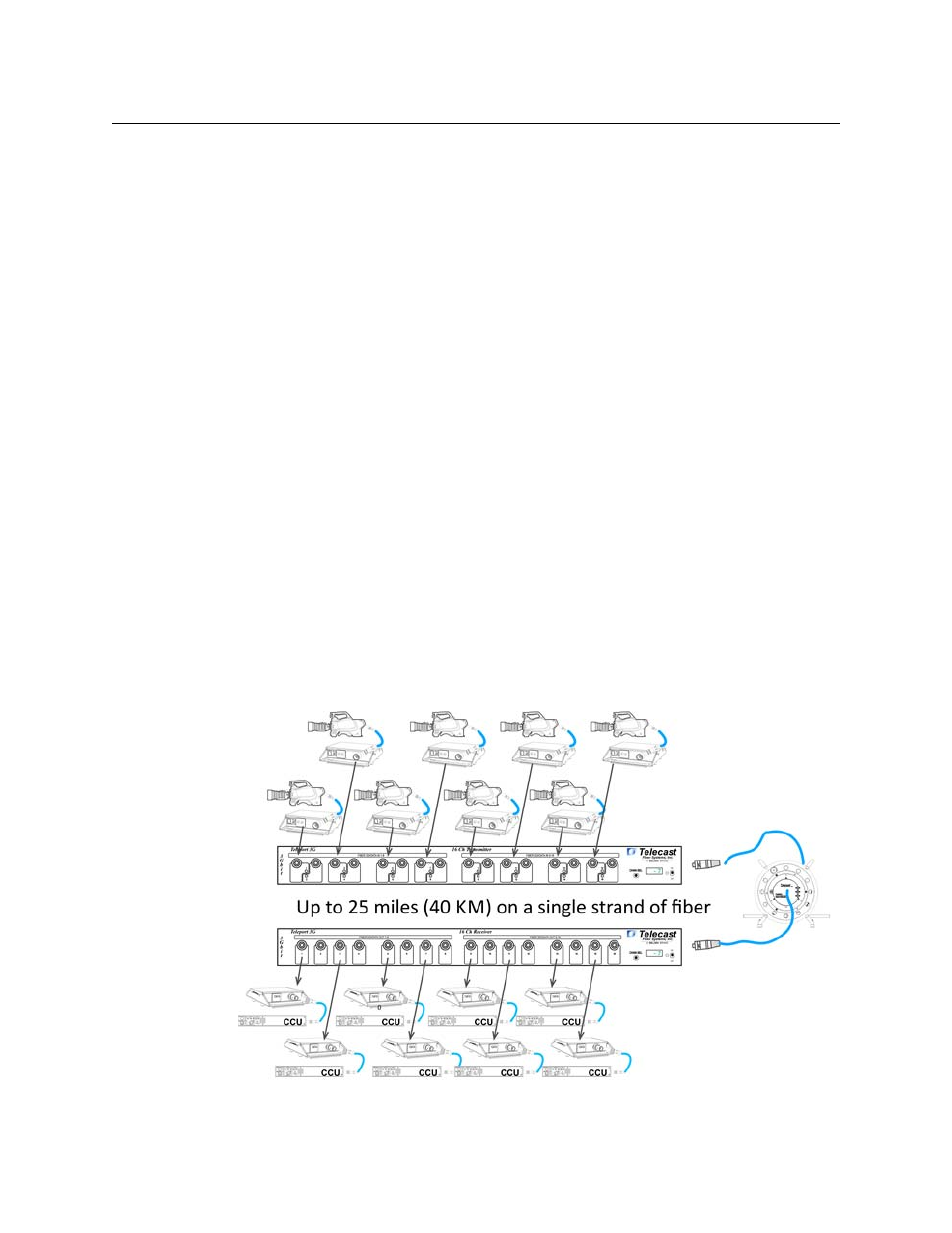About the teleport 3g system – Grass Valley TelePort 3G User Manual
Page 6

2
About TelePort 3G
About the TelePort 3G System
About the TelePort 3G System
The TelePort is a CWDM multiplexer. It takes in optical signals within the 1200nm to
1670nm optical window, receives those signals, does an optical to electrical conversion re-
transmits them (electrical to optical) onto the proper wavelengths and then multiplexes
them using a CWDM optical multiplexer onto one fiber. This results in up to 16 signals per
fiber.
The TelePort is available in three versions:
• Version 1: supports 16 channels of transmission over a single fiber and pairs with a 16
channel receiver at the other end of the fiber link.
• Version 2: transmits eight channels and receives eight channels over two fibers (one
fiber for each direction) and pairs with an identical model at the other end.
• Version 3: sends eight signals and receives eight signals, but uses only one fiber and
requires different models for each end of the link.
In all models, singlemode fiber is required.
The optical signal that you supply to the TelePort must be digital and must be 3 Gb/sec or
less. There is no requirement that this optical signal originate from a Grass Valley product.
The TelePort 3G provides LEDs to indicate the presence of a Fiber optic signal at each front
panel ST Fiber Connector. The TelePort 3G features an integrated optical power meter for
monitoring received optical power and other system parameters.
The TelePort 3G also features dual 12-18 VDC power inputs for electrical redundancy.
, a 16 Channel TelePort 3G Transmitter is connected to a 16 Channel TelePort
3G Receiver. Half of the total capacity connects to a remote set of production cameras to
the central control center. The open eight channels can be used for audio or data feeds, as
well as video monitoring feeds.
Fig. 1-1: Possible uses for the TelePort 3G
